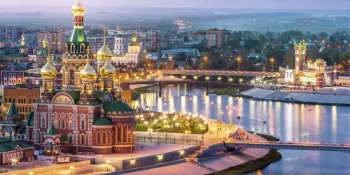To reach Sikkim, you have several options depending on your starting point and preferred mode of transportation. Sikkim is a state in northeastern India and is bordered by Nepal, Bhutan, and Tibet (China). Here are some common ways to reach Sikkim:
- By Air: The nearest airport to Sikkim is Bagdogra Airport (IXB) in West Bengal, which is approximately 124 kilometers away. From there, you can hire a taxi or take a shared cab to Gangtok, the capital city of Sikkim. The journey usually takes around 4-5 hours.
- By Train: The nearest major railway station to Sikkim is New Jalpaiguri Railway Station (NJP) in West Bengal. From NJP, you can take a taxi or shared cab to reach Gangtok. The road journey takes approximately 4-5 hours.
- By Road: a. From Bagdogra: You can hire a taxi or take a shared cab from Bagdogra to Gangtok. The journey takes around 4-5 hours, depending on road conditions. b. From Siliguri: Siliguri is another major gateway to Sikkim. You can take a taxi or shared cab from Siliguri to Gangtok, which usually takes around 4-5 hours. c. From Darjeeling: If you are visiting Darjeeling, you can take a taxi or shared cab from there to reach Gangtok. The distance is around 98 kilometers, and the journey takes approximately 3-4 hours.
- By Bus: Regular bus services operate from nearby towns and cities like Siliguri, Darjeeling, and Kolkata to Gangtok. You can check with the state transport or private bus operators for schedules and fares.
- By Helicopter: Sikkim also has a helicopter service from Bagdogra Airport to Gangtok. This is a more expensive option but offers a scenic and quick way to reach the capital.
It’s important to note that Sikkim requires an Inner Line Permit (ILP) for Indian tourists and a Protected Area Permit (PAP) for foreign tourists. You can obtain these permits from various check posts or online portals before entering Sikkim.
Before traveling, it is advisable to check the current travel guidelines and requirements, as they may vary based on the prevailing circumstances and government regulations.









